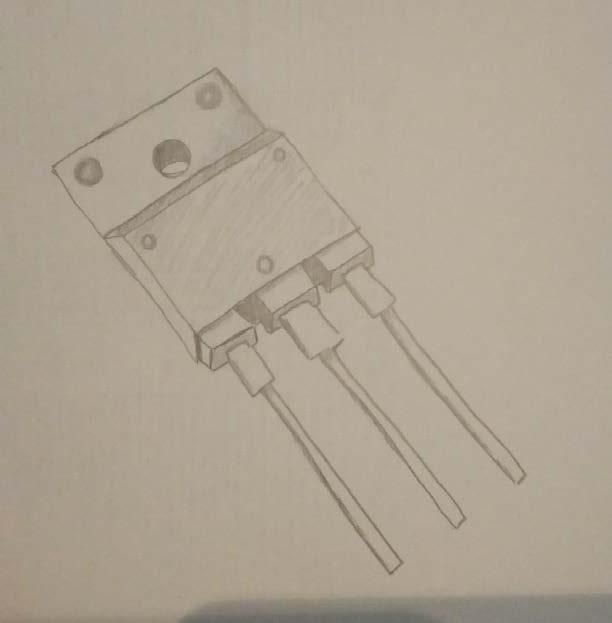The Silicon Transistor

The future is so very undecided until fate allows otherwise. In the span of a little over fifty years, at least four people craved the satisfaction of bringing their imaginations into reality by creating the silicon transistor. Alas, it seemed quite unreachable, nearly impossible; but only until 1954, when Physicist Morris Tanenbaum, through determination, pure silicon and germanium, built the very first silicon transistor known to humankind. And thus, brought to life what was only a figment of imagination for scientists before him. The silicon transistor held capabilities that no other device in its time could; nonetheless, not only pebbles but hurdles came in the way of releasing this invention to the public as Bell Labs judged and decided that the invention was not suitable in terms of commercial production. However, another institution, "Texas Instruments", saw potential in the device and, in a matter of months, successfully started trading the device for $49.95. ("1954: Silicon Transistors Offer Superior Operating Characteristics | The Silicon Engine"). Fate might have willed it to be so, but the mastermind that was to be celebrated was merely forgotten, and Texas Instruments took fame and appreciation. Nevertheless, this very vital invention lives on to be nothing but held at its deserved value.
As I unravelled the brown birthday wrapping paper, and my brother stood excitedly watching, I was met with the first glimpse of the technology I was to own. Laying with three little buttons, a vibrant french pink and a perfectly square touch screen, the iPod Nano of the 6th generation looked marvellous in the eyes of a seven-year-old. Like a child in a sweet shop, I was entranced by the abilities of a device that was half the size of my palms. It was a tenacious feeling, and I don't remember it ever returning after that time. Until, that is, this fateful Tuesday.

The reason why we're thriving in the information age, and the accessibility of technological devices, is owed to the silicon transistor. More than half a century ago, in the January of 1954, the silicon transistor came alive inside the institution of Bell Labs. Physicist Morris Tanenbaum, through determination, pure silicon and germanium, built the very first silicon transistor.
The silicon transistor in itself is a semiconductor that connects electrical signals through at least three terminals to the electrical circuit of any device. Furthermore, it is astounding that the silicon transistor is also capable of amplifying these said electrical signals. However, his work went unnoticed, and Labs decided not to pursue the project further as it was deemed unattractive for commercial production.
Soon in the course of time, an institution by the name of "Texas Instruments" decided to have faith in this invention and make it a solid creation. A man with astute thinking, Gordon Teal, who ironically was a former part of Bell Labs, gathered a team of skilled scientists and engineers to work on the silicon transistor till it reached the utmost perfection he desired. A chemist named Willis Adcock was left in charge of leading the team. By using a specific type of silicon that was higher in terms of purity, they built the invention that's present even today, on the 14th of April 1954 ("1954: Silicon Transistors Offer Superior Operating Characteristics | The Silicon Engine"). Alas, the original creator was merely forgotten as in the same year, at a conference held at the 'Institution of Radio Engineers in Ohio, on May 10th, credit was not given where it was due when Teal shared that this invention would start production. By the end of the 1950s, the silicon transistor was proven to be such a revelation that almost no other semiconductor was famously used.
Today, Morris Tanenbaum is 93 years old, and I imagine he proudly watched how silicon transistors paved the way and showed us how to make the functioning laptops, computers, and televisions we use as a society relentlessly.
Thus, some extremely honourable mentions are Julius Edgar Lilienfeld, who, in 1926, was the first person known to propose the creation of a silicon transistor. Still, unfortunately, his materials were limited, and he lacked teammates with the same strive. Furthermore, in 1947, John Bardeen, Walter Brattain and the leader of the group, William Shockley, worked rigid hours to create a substitute for vacuum tubes by transistors as they found that transmitters require a lesser consumption of energy. Nonetheless, it is potent to remember that transistors come in many forms - bipolar transistors, junction transistors, field-effect transistors and many more (Lake,2022). And the one that is so prevalent in today's society is the silicon transistor.
And that is why, if I didn't research the depth of silicon transistors that fateful Tuesday, I would've forever lived a life of ignorance towards the true value of all the electronic devices we forget are marvels brought on society.
References
“First Silicon Transistor Invention » Electronics Notes.” Electronics Notes,
https://www.electronics-notes.com/articles/history/semiconductors/first-silicon-
transistor-invention.php. Accessed 23 February 2022.
Georgiev, Deyan. What is a Silicon Transistor? (with pictures), 29 January 2022,
https://www.wise-geek.com/what-is-a-silicon-transistor.htm. Accessed 23 February 2022.
Lake, Andy. “Transistor.” Wikipedia, https://en.wikipedia.org/wiki/Transistor. Accessed 23 February 2022.
“Morris Tanenbaum.” Wikipedia, https://en.wikipedia.org/wiki/Morris_Tanenbaum. Accessed 23 February 2022.
“1954: Silicon Transistors Offer Superior Operating Characteristics | The Silicon Engine.” Computer History Museum,
https://www.computerhistory.org/siliconengine/silicon-transistors-offer-superior-operating-characteristics/. Accessed 23 February 2022.
“1956 Nobel Prize in Physics - John Bardeen, Walter H Brattain and William Shockley.” Nokia Bell Labs, 17 July 2020, https://www.bell-labs.com/about/awards/1956-nobel-prize-physics/#gref. Accessed 23 February 2022.
Noyce, Robert, and Gordon E. Moore. “transistor - Silicon transistors | Britannica.” Encyclopedia Britannica, https://www.britannica.com/technology/transistor/Silicon-transistors. Accessed 23 February 2022.
Author biography
A mixture of loud and reserved to the naked eye, there’s more under the surface to Magore. Though she’s yet to learn more about where her roots - the Maldives - lead to, it’s her greatest dream to leave a footprint in the name of her county. Magore savours the art of creative writing and reading and is fond of sports to do with the ocean. Close to her heart, philosophy and literature are amongst her favourite subjects. Nonetheless, many times, many choices have presented themselves, but Magore sticks to her childhood passion of following through with a career in the field of language.

Cite this article as:
Magore Niyaz, The Silicon Transistor, theCircle Composition, Volume 2, (2022). https://thecirclecomposition.org/silicon-transistor-2/
